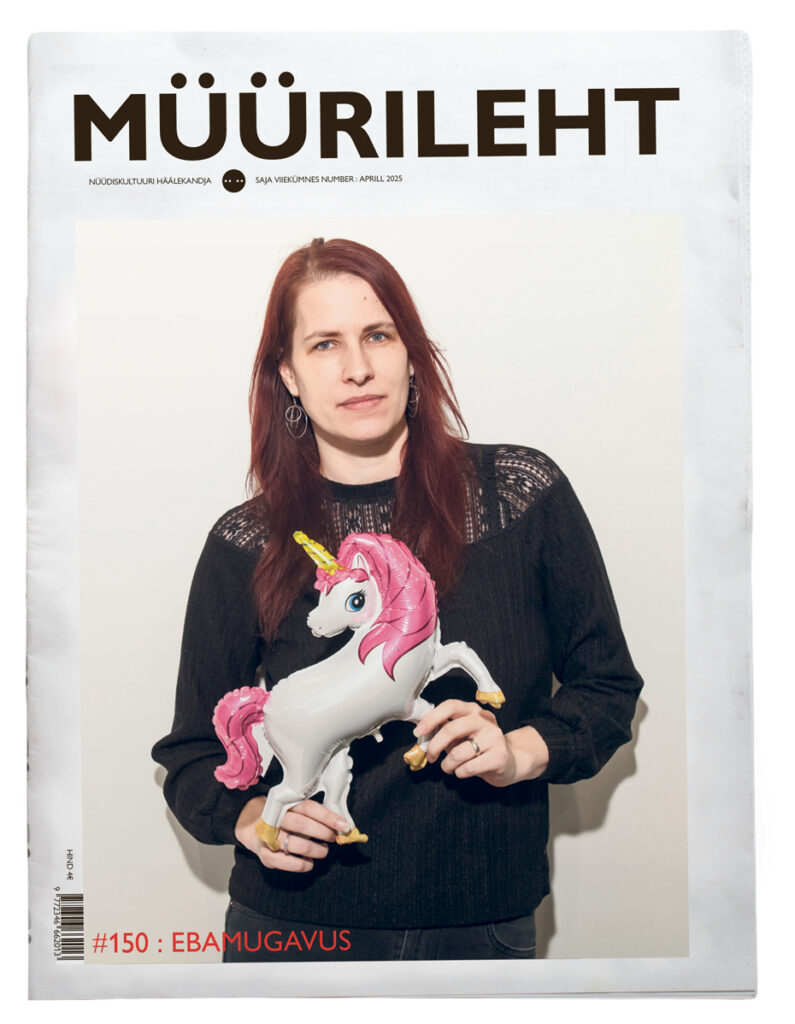Bicycle. Made in Latvia.
Lugemisaeg 12 minThis has been the second year a Latvian enterprise “Ērenpreiss Original” took part in the world’s biggest bicycle trade exhibition “Eurobike” in Friedrichshafen, Germany. Although the loudest, it is not the sole name in Latvian bicycle and their accessory manufacturing. Veronika Viļuma offers a look at already known as well as less famous players in the field.
“Since 1886, when Aleksandrs Leitners founded his company in Riga, bicycle manufacturing has seen both blooming and stagnating times. In the first half of the 20th century, there were more than 70 large and small enterprises in Latvia, and in mid–30s there was no such thing as bicycle import, because local producers could meet the needs of the demanding Latvian cycling market,” in a book about bicycle production history “From Leitners to Ērenpreiss” write Edvīns Liepiņš and Jānis Seregins.
Although these numbers have significantly changed since, in the recent years, as more people want to travel in a greener, cheaper and more convenient manner, the cycling wheel has been spinning quicker in many senses of the word. The flourishing of the cycling culture is facilitated by different events, clubs, private and council–backed initiatives; there are more talks about safety issues and the role of cyclists in the entire traffic system. One of the links in the chain is the home–grown bicycle manufacturing, which is gradually reborn like Phoenix from the ashes.
Proven values
The most famous Latvian bicycle brand since the 1920s is “G. Ērenpreis” — bicycles that were thus described in an advert: “Work makes a man, but a G. Ērenpreis Original bicycle makes a rider”.
Inheriting his great grandfather’s brother’s surname, Toms Ērenpreiss has been a dedicated cycling devotee since childhood, who, in 2005, started the “Ērenpreiss” bicycle restoration workshop. Thanks to Toms, the 2000s saw a boom in vintage bicycle restoration, which encouraged others to get those old Ērenpreisses and other Latvian–made bikes out of the shed. The workshop was followed by an idea about bicycle manufacture, and this July the second collection of bikes was presented. At the moment, six models are being offered, which are characterised by modern technical solutions together with proven values in their classical look and construction geometry. In comparison to the previous collection, the new models are fitted with 2–5 gears, they are made of a different, chrome–molybdenum frame material; the functional and design solutions are also improved — the bicycles have special chain protectors and mudguards, as well as leather handles.
Like their historical predecessors, modern “Ērenpreiss Original” bicycles are exported to Great Britain, Estonia, Lithuania, Russia, Sweden, Denmark, Germany, Switzerland and Luxemburg. For the second year they are being present at Europe’s biggest bicycle industry exhibition “Eurobike” in Friedrichshafen, Germany.
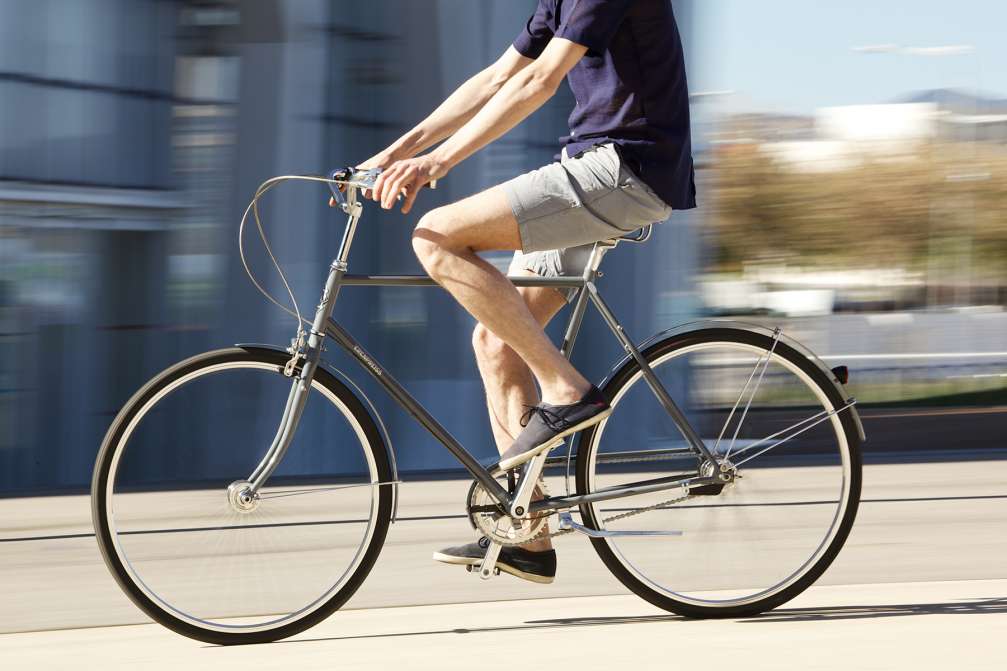
The first bike
Increasing export is also what Edmunds Liepiņš, the founder “Velomachine”, had in mind when he acquired, in 2011, the patent and production rights for the historic children’s bike “Spārīte”. Watching his children’s first steps at cycling, Edmunds understood that the model from 1974, whose production ceased in the 90s, is the most appropriate most stable way to learn to ride safely. Like “Ērenpreiss Original”, “Spārīte” also takes pride in proven values that have acquired new technological qualities while retaining its historical design.
Nostalgia and childhood memories about pedalling around one’s home are among many comments on the “Velomachine” website, which praise the first bike of many generations. The tricycle, which is meant for children aged 2–5, comes in green, blue, white and yellow colour; it costs LVL 65 and can be bought in Latvia, Finland, Belarus, Ukraine, Russia, or individually ordered from other countries as well.
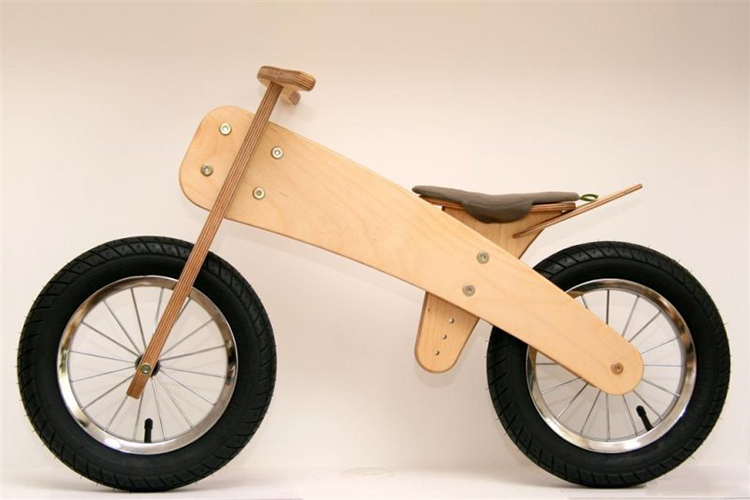
First attempts at cycling are also what Sanita and Mareks Ģipteris care for, so, in 2010, they established a family company “MGS Factory” under the Kurzeme business incubator, and they are now developing the brand “DIP DAP”. The idea about production came to Mareks, who during a walk in Sigulda saw a little boy vigorously riding a wooden pedal–less bicycle up and down a hill. When he approached the boy’s parents, it turned out that the bike was brought over from England, and, while there are many similar producers in the world, there was no such a product in Latvia.
There is a famous saying about everything that is genius is simple, and this can be said about the “DIP DAP” bikes. They are toys that facilitate children’s development — their balance and coordination; it trains musculature and prepares children aged 3–5 for a bike with pedals. The five–person team of “MGS Factory” can be proud that “DIP DAP” bikes have also gained acknowledgement abroad. At the beginning of this year, the company took part in “Spielwarenmesse”, a toy industry exhibition in Nuremberg, Germany, where they received encouragement to conquer European markets. Mareks tells that now the biggest interest comes from Germany and the Netherlands, where they have already began exporting “DIP DAP» bikes as well as other MGS Factory products — wooden dollhouses. When asked what brings the most satisfaction from the work, Mareks answers, “The little clients’ delight.”
Invent a new
Positive references and a wish to provide others with riding pleasure is also the main stimulus behind producers of “HOPP”. The special tricycles for disabled adults, seniors and children “HOPP” are being produced for already two years, but the authors of the idea Madara Makare and Edgars Spridzāns have worked with bikes for a long time, being a part of a freak–bike movement “The Riders of Apocalypse”. With a support from “Brigāde” project competition, having come all the way from freak–bikes to running a social business, presently “HOPP” is a 3–4 people team that offers their clients three models. However, the reality demands different approaches, especially when producing bikes for children, who find it necessary to try out the tricycles and choose the right colour. The visual appearance is not a small aspect for “HOPP”, because “why make ugly when you can make beautiful”, besides, Edgars, who is a metal artist, according to Madara, is also a big aesthete.
In reality, the confidence and huge enthusiasm hit against people’s possibilities. The bicycle’s price is 340–400 lats, while potential clients — children and seniors — are hardly financially secure people. Presently there are several dozens of “HOPP” bicycles on Latvian streets, and the active selling season is from February until August. Approximately 20% of “HOPP” bikes are bought for private money, while the rest have found their owners thanks to supporters and charities. Madara says that “HOPP” bikes open up more possibilities than one could imagine — they not only offer a freedom to travel but also give a chance to be together with the close ones. “The father runs, the son cycles along,” Madara mentions a client’s story.
The future goal for “HOPP” is to make tricycles available not to just a few people, but also to absolutely all Latvians who need them.
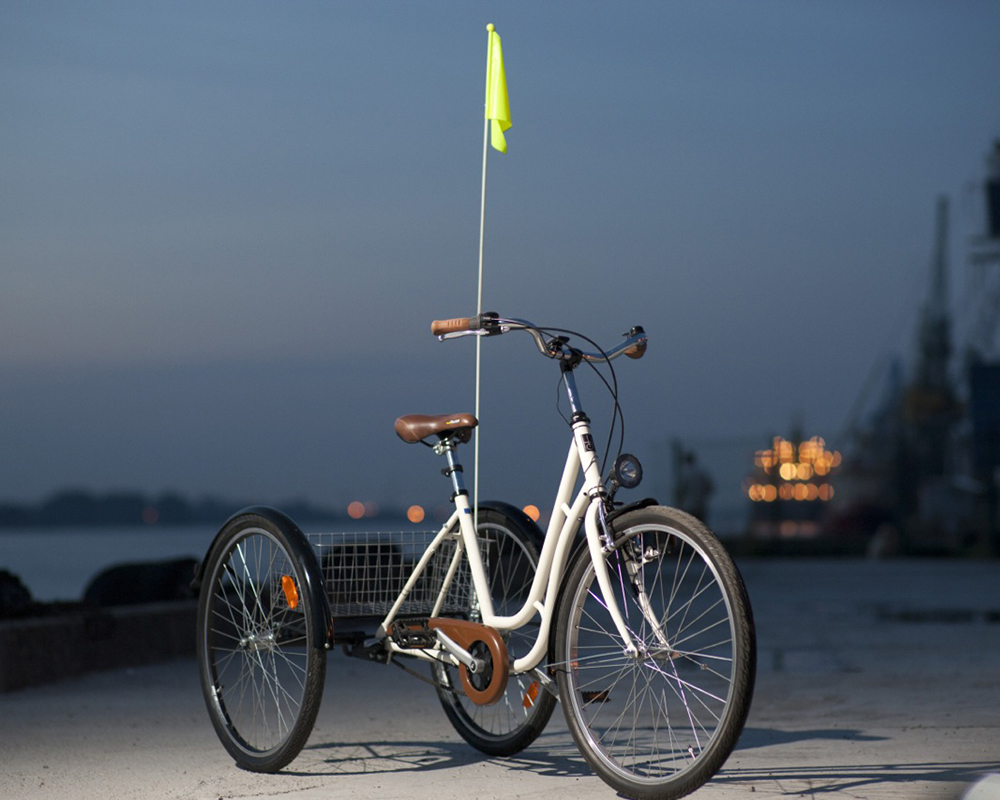
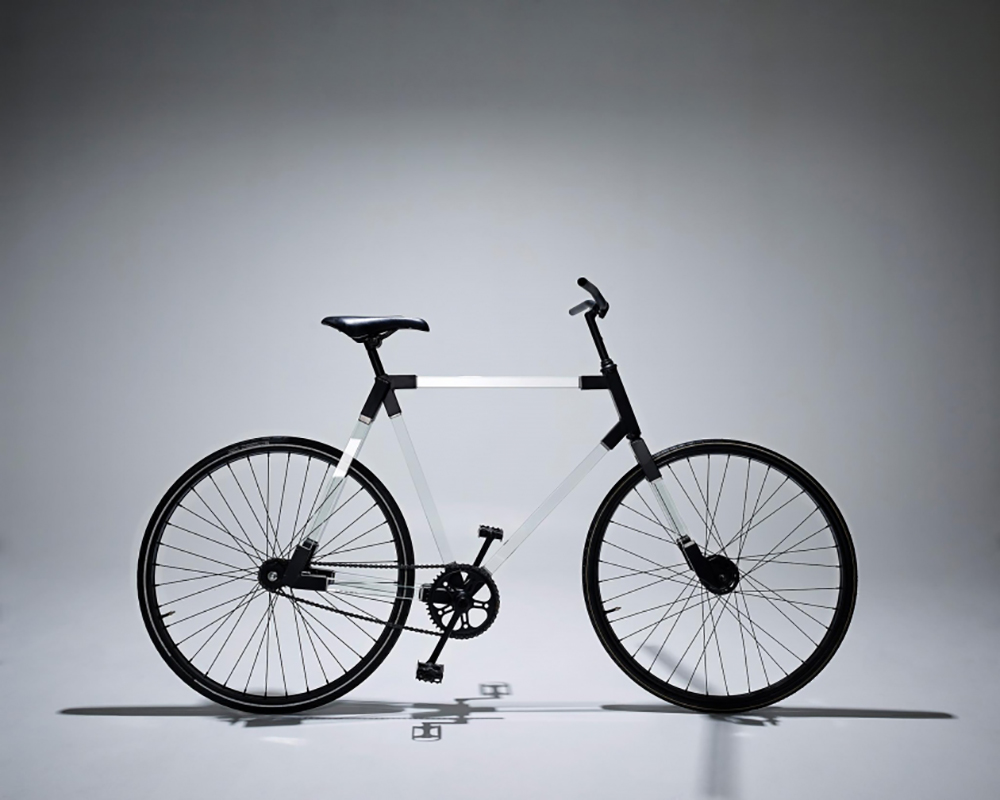
Not too far from there, in Andrejsala, another unusual cycling project was born this spring — the world’s first glass bicycle, created in six months by Latvian glass artists Artis Nīmanis, the creator of “an&angel” brand, and Gatis Vasiļjevs. The challenge to combine the fragile material with movement and speed is embodied in a 21 kg men’s bicycle of glass that can hold a rider of up to 90 kg. It is expected to improve the mobile glass object with time — the existing one is a prototype based on which the further ones are going to be produced.
Architecture of small forms
The idea about an ascetic men’s bicycle was born in 2010 in “Arhiidea” architecture firm, when Ēriks Grūbe, himself a cyclist, designed an architect’s version of what a bicycle should look like. It is based on functionality, clean form and ridding of unnecessary details; it doesn’t have needless accessories or stickers; even the chain here is substituted by a serrated belt that doesn’t clink or stain clothing, and it doesn’t need to be oiled. Standing at the wall in “Arhiidea’s” office there are now two self–made bicycles with titanium frames; the uncoated fixed–gear one is used by Ēriks, but the model with brakes is sometimes used by the project’s co–author, architect Toms Kokins. Each bike is manufactured to order, and there are three exclusive ones already sold, whose price is beyond a thousand lats. A different story is with the curved, single–piece wooden handlebars, which, as a separate accessory, are made from chestnut, oak and ash trees and sold both in Europe and the United States. Toms explains that the handlebar’s key quality is its geometry, the curve, that allows the rider to assume different positions — be comfortable with a straight back when on city streets, or ride in the “sports mode”.
“A hobby with a commercial potential,» this is how Toms describes his peers’ devotion to cycling. As an additional element for “Arhiidea’s” mobile house, the “Esclice” bike has also managed to catch attention in Milan’s fair, as well as in London’s “100% Design”. Although for authors their daily jobs are priority, there are substantiated hopes to see architectural takes on women’s and cargo bicycles.
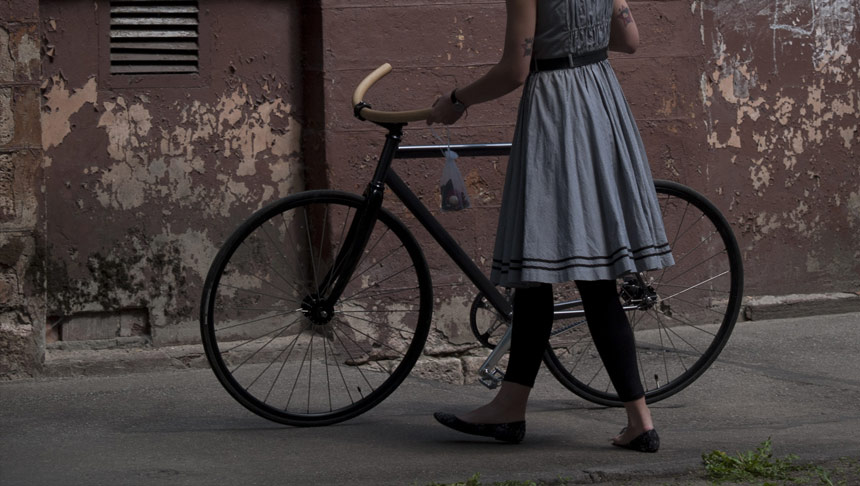
The fact that architects care for cycling culture is proven by Reinis Saliņš, who in the spring of 2010, together with his father, produced their first wooden handlebar, which they previously only had seen in museums. An experience in furniture design and the fact that straight, narrow handlebars became popular again encouraged Reinis to experiment and produced a desire to make such for himself. Upon seeing evidence that a solid oak wood bar doesn’t hold the expected load, at the end of the season Reinis come to a solution — a wooden bar with a metal core.
In 2011, together with a friend Reins Vība, they founded a company called “Woodstick”, and now in addition to birch, maple and chestnut models the company produces bars with aluminium plates. Last year the product range was supplemented with a curved handlebar and two models of bicycle stands — “Iceberg” and “Elk” — which come in different shades.
The “Woodstick” produce can be bought from their internet store, prices ranging from 90 to 600 USD, from where it then ships worldwide, while «in real life” the accessories can be bought from the shops in Tel Aviv, Mexico and London, where the company is most active. “Architecture is slower, more demanding, and the number of clients is comparatively smaller. With “Woodstick” we can reach people quickly. The flow can be felt,” says Reinis while working on prototypes for the next season.
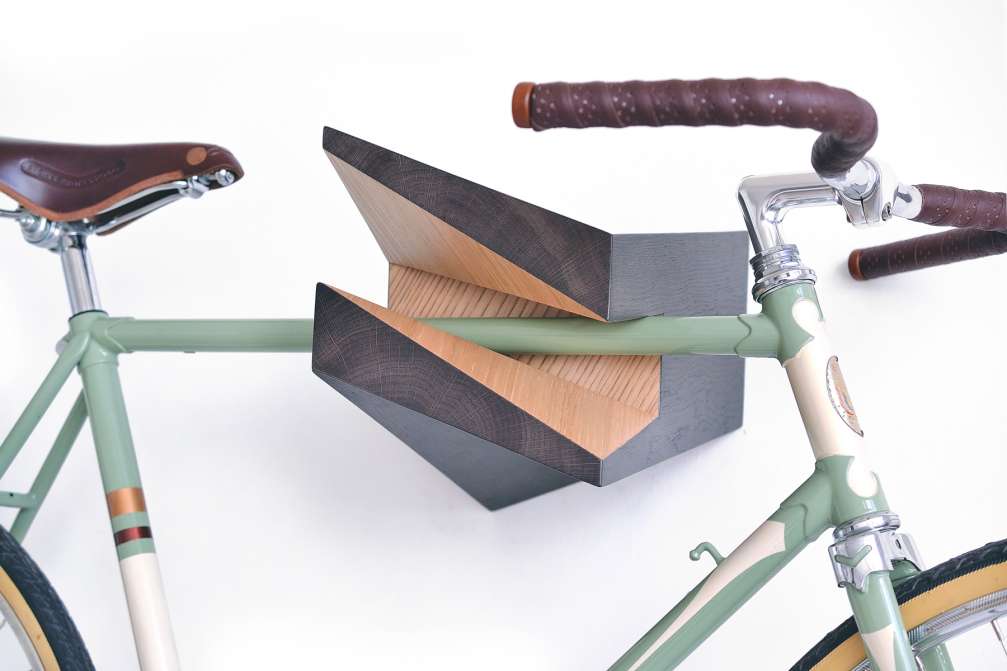
In and out of season
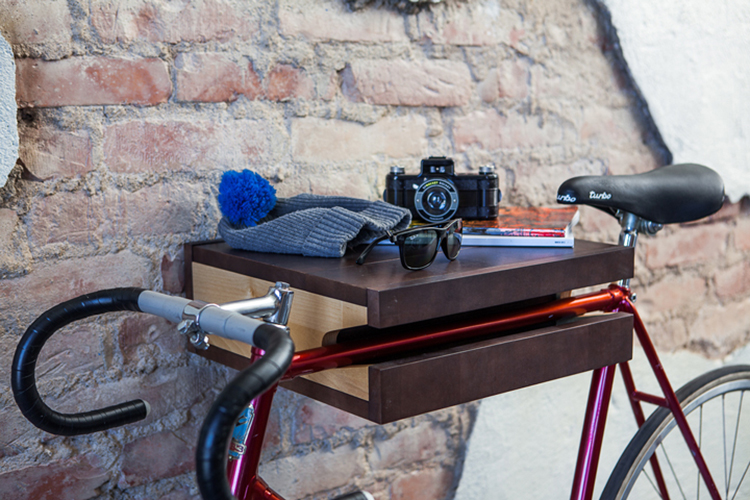
One of Maksims Šadurskis’s projects is a bicycle stand of even more laconic design. The design for “FIXA bike shelf” was created to use space smartly — a bike can be exhibited on a wall just like a painting, and the shelf can also be used for placing a plant, a book or some knick–knacks. About this interior object made of birch, created just last year and costing 170 EUR in the internet store, there have already been several articles; among the writers were the local “Deko”, “Couch” (Germany), “ELLE Décor” (Thailand) and “ICON” (UK) and other media, as its main praise being its multi–functionality.
That a bicycle becomes a beautiful and a fitting element within an interior and not just a means of transport that sometimes leaves us with a bruise in a dark hallway, is what “Velo Sock» is all about. Their innovative product — an elastic “bike sock», which can be put over a bike indoors to avoid bringing in sand, mud or other dirt after the ride — within a year has attracted popular attention. The author Oskars Mickevičs has patented his invention and is planning to sell it to both local and foreign cyclists. At the moment, three models of the accessory are available — “Lilly”, “Hary” and “Tom”, all differ by print.
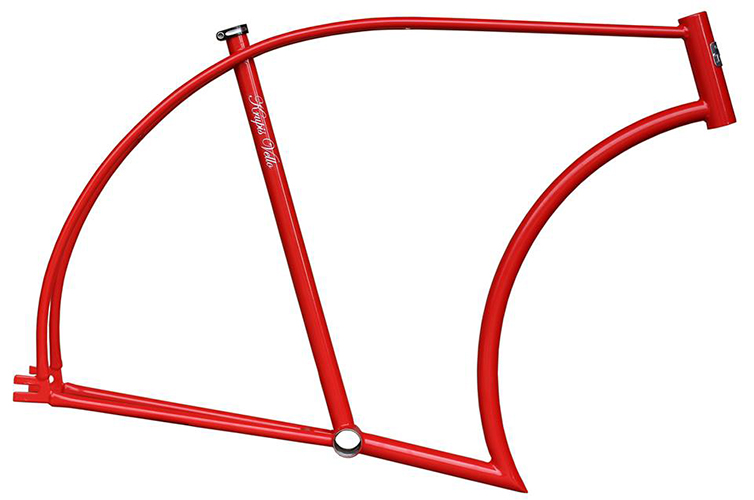
Those who have carefully followed processes in local design will be likely to know the name of Andris Tereško. The sculptor and designer, who has participated in various art projects and created metal design objects in a personal technique, since last year runs the “Krupisvello” workshop in Cēsis. With respect and love for both — the bicycle and the client — “Krupisvello’s” goal is to make aesthetically attractive yet practical bicycle frames. The frames, inspired by curved forms of the 1930s, are on offer for around LVL 150, coming in three sizes and various colours and each being carefully prepared in the workshop.
Although the cycling season in Latvia is coming to an end (although, judging by the examples, one might think it’s not going to end so soon), the minds of local manufacturers do not stop at the accomplished. The product range of “Ērenpreiss Original” is being just complemented by new cycling accessories — already popular models can now be fitted with a special basket made by Latvian weavers, a brass bell and cycling lights. Even though it is often said that there’s no need to invent a bicycle all over again, the successful examples of Latvian bicycle, their accessory and parts manufacturers show that there is indeed a space to remind, improve and add to already existing examples, especially if it’s done masterfully and for the heart.
